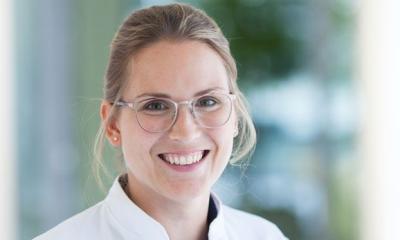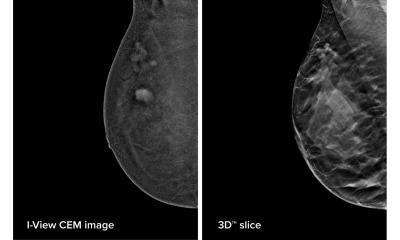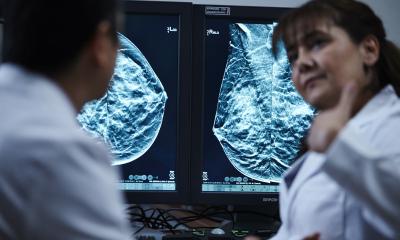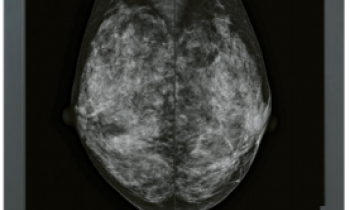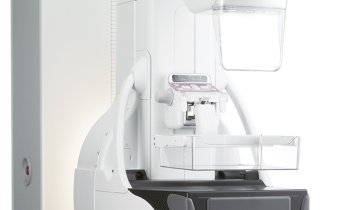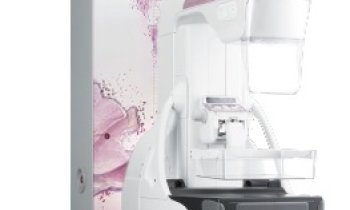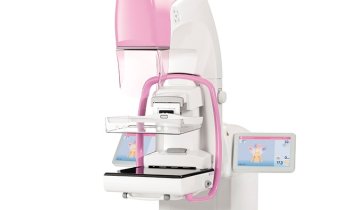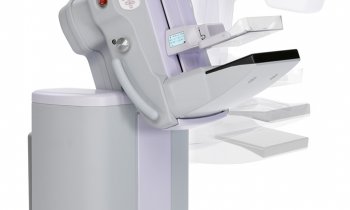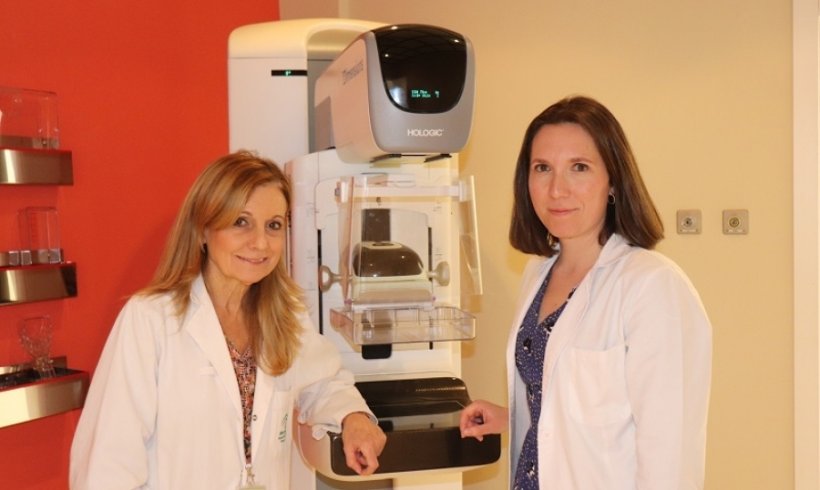
Image source: University of Córdoba
News • 3D mammography
Trial shows benefits of digital breast tomosynthesis in breast cancer screening
A clinical study in which almost 40,000 women have participated reveals the efficacy of breast tomosynthesis in decreasing the rate of interval carcinomas; that is, those that appear between two screening tests.
Interval breast cancer is one that appears between two reviews of a screening program. That is, it is diagnosed after a test whose result was negative and before the next evaluation. For obvious reasons, it is a very reliable indicator of the effectiveness of early detection programs for this disease: if the number of cancers that appear after a screening is high, it is a sign that the program is not working. Conversely, if the number of tumors diagnosed after screening is low, it indicates that the program is fulfilling its function: to detect this disease at an early stage.
A clinical trial published in the journal European Radiology by the University of Cordoba, the Maimonides Institute for Biomedical Research (IMIBIC) and the Reina Sofía Hospital in Cordoba, has revealed the effectiveness of breast 'tomosynthesis' in reducing by almost half the incidence of this type of cancer appearing between two rounds of screening, suggesting the advisability of including this test in a standardized way in breast cancer early detection programs.
Recommended article

Article • Digital breast tomosynthesis
Transforming breast screening: The role of AI in improving reading workflow
While having more centers adopt digital breast tomosynthesis (DBT) for breast cancer screenings into their practice is a positive change, it also presents some challenges for radiologists—particularly the increased number of images for radiologists to review. This challenge has paved the way for AI to offer innovative workflow solutions for radiologists that do not sacrifice accuracy.
It is a screening method complementary to traditional mammography, or '2D mammography' which, like the latter, uses x-rays. The difference is that tomosynthesis avoids the overlapping of structures and allows the lesions to be seen better when recreating a volumetric image, such that it is also known as' 3D mammography.' "Despite the fact that this technique has become widespread in diagnostic units, it is still not as standardized in screening programs," says Marina Alvarez, head of the Radiodiagnostic Unit at the Reina Sofía Hospital, one of the authors of the study and a nationally prominent figure advocating for the early diagnosis of breast cancer.
For two years, the study has worked with the population screening carried out by the Junta de Andalucía (regional government). Almost 24,000 women were examined only with 2D mammograms, while another group of 16,000 was also evaluated with breast tomosynthesis. According to the results of the work, in the first group the interval cancer rate was 1.8 per thousand people, while in the second it was 0.93. In other words, the likelihood of being diagnosed with an interval cancer was 49% lower in women who were also screened with the '3D mammogram'.
As explained by the main author of the study, Cristina Pulido, the impact of tomosynthesis on the rate of interval carcinoma is even more evident in women with dense breasts, "an especially relevant fact" taking into account that "in this type of breasts, with a higher proportion of glandular tissue, it is more complicated to explore and assess the existence of lesions.
The results of the work also show that the interval cancers detected in women who have been screened with tomosynthesis are smaller than those detected in women screened with digital mammography, which is positive considering that the size of the tumors is closely related to the prognosis. This may be due to the greater diagnostic capacity of the method itself. If this technique allows for a more accurate detection of the lesions, it implies that the tumors that have gone unnoticed are smaller. The work, in short, highlights the desirability of incorporating this test in a systematic way into the population programs for the early detection of breast cancer, an advance towards which significant steps are already being taken. "Many radiologists are already being trained in this technique. Andalusia has just renewed a significant number of mammograms with tomosynthesis, and this type of testing is already being recommended for screening," explains Dr. Álvarez.
In this way, it could further improve the diagnosis of a disease that, according to the Spanish Society of Medical Oncology, accounts for 28.9% of total cancers in women, and is the leading cause of death from cancer in this population. Despite this, survival and prognosis has improved exponentially thanks to medical advances. Everything indicates that science will continue to make progress against this disease in the years to come.
Source: University of Córdoba
25.03.2024



